![]() If you are in New York City this evening, head over to Pier 25 on the Hudson River to the historic lighthouse tender the ex-USCGC Lilac for a free concert in honor of National Lighthouse Day. The concert, from 6:00 to 9:00 PM, rain or shine, will be on-deck under the awning, featuring musical performances by Peter Zummo, Ernie Brooks, and Mustafa Khaliq Ahmed.
If you are in New York City this evening, head over to Pier 25 on the Hudson River to the historic lighthouse tender the ex-USCGC Lilac for a free concert in honor of National Lighthouse Day. The concert, from 6:00 to 9:00 PM, rain or shine, will be on-deck under the awning, featuring musical performances by Peter Zummo, Ernie Brooks, and Mustafa Khaliq Ahmed.

Photos: Mitch Waxman
The 27th Annual Great North River Tugboat Race, sponsored by the Working Harbor Committee, will be held on the Hudson River near Pier 84 starting at 11 a.m. on September 1st. Watch from shore or get onboard the Spectator Boat and see the whole event up-close. Boarding begins at 10:15 am, departure is at 10:30 am from Pier 83. Tickets for the Spectator Boat cost $25 for adults, $20 for seniors and $12 for kids, 3-12. Click here to buy tickets.

Melville Memorial, 6 Pearl Street, Photo: Wally Gobetz
We missed the bicentennial of Herman Melville‘s birthday. He was born just over 200 years ago on August 1, 1819, in a boarding house on 6 Pearl Street, in the Financial District of Lower Manhattan in New York City. In honor of the bicentennial here is an updated post from a few years ago on visiting Melville’s birthplace.
The boarding house where Melville was born is long gone. A 42-story gleaming glass and metal skyscraper, 17 State Street, rises where the building once stood. One photographer referred to the building as a “great white whale” which is certainly evocative. While the boarding house is gone, there is a plaque and bronze bust of Melville roughly on the site of the original structure.
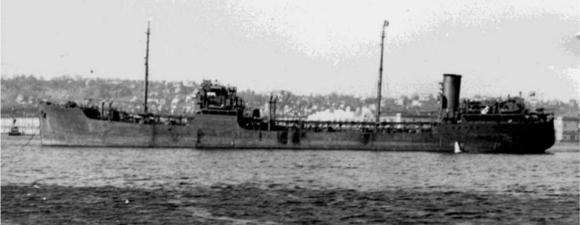 At about 9AM on January 15, 1942, the British tanker Coimbra, bound from Bayonne, NJ for Halifax, laden with 8,038 tons of lubricating oil, sank after being struck by two torpedoes fired by the German submarine U-123 off the southern shore of Long Island. Thirty-six of the 46 people aboard the tanker died.
At about 9AM on January 15, 1942, the British tanker Coimbra, bound from Bayonne, NJ for Halifax, laden with 8,038 tons of lubricating oil, sank after being struck by two torpedoes fired by the German submarine U-123 off the southern shore of Long Island. Thirty-six of the 46 people aboard the tanker died.
Oil still trapped in the tanks of the sunken British tanker began leaking noticeably four years ago, creating a visible sheen above the wreck, which is in 185 feet of water, 30 miles off Long Island’s south shore. To address the environmental hazard, last May, divers supervised by the US Coast Guard began to remove the oil from eight tanks on the ship,
Newsday reports that a unified command consisting of the DEC and the Coast Guard oversaw the oil removal supported by more than 100 specialists from government, industry and environmental concerns. The project was accomplished with the assistance of a 6,000-pound remotely operated underwater vehicle.
By the middle of July, the divers had successfully removed 450,000 gallons of oil.
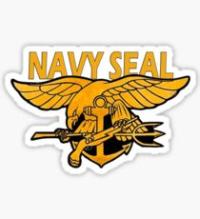 In a blistering letter to his forces from the commander in charge of the Navy SEALs, Rear Adm. Colin Green, warns “We have a problem.” The sentence was in bold-faced print and underlined. The letter follows a series of incidents of alleged misbehavior by the elite special operations forces, including alleged illegal activity by two Navy SEAL teams.
In a blistering letter to his forces from the commander in charge of the Navy SEALs, Rear Adm. Colin Green, warns “We have a problem.” The sentence was in bold-faced print and underlined. The letter follows a series of incidents of alleged misbehavior by the elite special operations forces, including alleged illegal activity by two Navy SEAL teams.
Also, toward the end of July, an entire platoon of SEAL commandos was abruptly removed from Iraq after reports of serious misconduct and a breakdown of discipline. The Navy is investigating reports that Foxtrot Platoon of SEAL Team 7, held a Fourth of July party where some members consumed alcohol against regulations, and that a senior enlisted member of the platoon had raped a female service member attached to the platoon.
 Coast Guard Day in the United States is this Sunday, August 4th, commemorating the founding of the U. S. Coast Guard as the Revenue Marine on August 4, 1790, by the Secretary of the Treasury, Alexander Hamilton.
Coast Guard Day in the United States is this Sunday, August 4th, commemorating the founding of the U. S. Coast Guard as the Revenue Marine on August 4, 1790, by the Secretary of the Treasury, Alexander Hamilton.
On the ex-USCG Cutter Lilac, however, they will be celebrating the 229th birthday of the Coast Guard all weekend with programs and activities. The ship is open from 2:00 to 6:00 PM Saturday and Sunday. Admission is free. Lilac is berthed at Hudson River Park’s Pier 25 at West Street and N. Moore Street, in lower Manhattan.
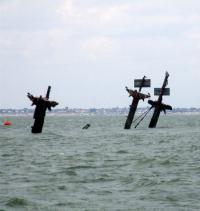
Kingposts of the SS Richard Montgomery in the Thames Estuary.
The good news is that last month there was a debate in the UK’s House of Lords about what to do with the wreck of the Liberty ship SS Richard Montgomery, which sank loaded with munitions in the Thames estuary near Sheerness in World War II. The bad news is that similar debates have been taking place for most of the past 75 years since the ship sank with no clear answer as to what to do with the dangerous wreck.
SS Richard Montgomery sank in a gale in 1944. The wreck which still contains an estimated 1,400 tonnes of high explosives, has been referred to by the BBC as the “ticking time bomb of the Thames.” The New Scientist has referred to the ship as “The Doomsday Wreck.”
 The W.O. Decker, the last wooden tug in New York harbor, is back at work. The 52′ tug, built in 1930 in Long Island City, is now offering harbor tours from the South Street Seaport on New York’s East River. After more than a decade of restoration, the W.O. Decker is giving visitors a sea-level perspective on New York’s maritime history.
The W.O. Decker, the last wooden tug in New York harbor, is back at work. The 52′ tug, built in 1930 in Long Island City, is now offering harbor tours from the South Street Seaport on New York’s East River. After more than a decade of restoration, the W.O. Decker is giving visitors a sea-level perspective on New York’s maritime history.
The tours are now offered on Saturdays and Sundays, although the South Street Seaport Museum is working to expand the tours to weekdays as well. The hour-long tour costs $30 and reservations are required. For more information, click here.
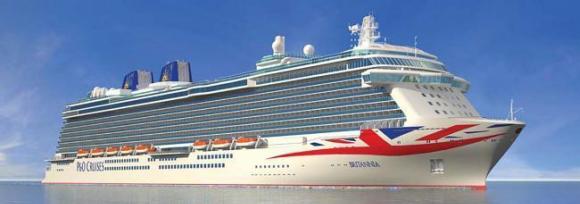 In the general category of you can’t make this stuff up, in early hours of Friday morning, a mass brawl broke out on the P&O Britannia, in which passengers used furniture and plates as weapons, according to witnesses. Six people—three men and three women—were treated for bruises and cuts sustained in the melee. The ship was returning from a week-long cruise to Norway’s fjords. The brawl reportedly followed an alcohol-fuelled afternoon of “patriotic” partying on the ship’s deck.
In the general category of you can’t make this stuff up, in early hours of Friday morning, a mass brawl broke out on the P&O Britannia, in which passengers used furniture and plates as weapons, according to witnesses. Six people—three men and three women—were treated for bruises and cuts sustained in the melee. The ship was returning from a week-long cruise to Norway’s fjords. The brawl reportedly followed an alcohol-fuelled afternoon of “patriotic” partying on the ship’s deck.
Here is where things get really odd. Early reports from multiple witnesses report that the brawl was triggered by the arrival of a man wearing a clown suit at a party in an upper deck restaurant on the ship.
 The USCG barque Eagle has returned to its longstanding homeport at the US Coast Guard Academy in New London, CT, which had been the ship’s homeport since 1946. The Eagle, a 295-foot barque used as a training cutter for future officers of the United States Coast Guard, has been temporarily homeported in Baltimore for the last five years as it underwent extensive restoration.
The USCG barque Eagle has returned to its longstanding homeport at the US Coast Guard Academy in New London, CT, which had been the ship’s homeport since 1946. The Eagle, a 295-foot barque used as a training cutter for future officers of the United States Coast Guard, has been temporarily homeported in Baltimore for the last five years as it underwent extensive restoration.
Sandy Hook pilots have been guiding ships into New York harbor since 1694 when Colonial legislators first mandated that pilots be stationed at the barrier beach at the mouth of the great harbor. Here are two short videos of New York harbor pilots. The first was shot by Edison Manufacturing Co. near Robbins Reef in 1899. The second, by Jessica Leibowitz for Gothamist, shows today’s pilots at work.
 Here is a visually stunning twelve-minute animation, Age of Sail by Google Spotlight Stories. The story itself is a bit anemic, but the visuals largely make up for it. The producers describe the video as follows:
Here is a visually stunning twelve-minute animation, Age of Sail by Google Spotlight Stories. The story itself is a bit anemic, but the visuals largely make up for it. The producers describe the video as follows:
Set on the open ocean in 1900, Age of Sail is the story of William Avery (voiced by Ian McShane), an old sailor adrift and alone in the North Atlantic. When Avery reluctantly rescues Lara, who has mysteriously fallen overboard, he finds redemption and hope in his darkest hours. Directed by ACADEMY AWARD-winning filmmaker John Kahrs. Produced with Chromosphere and Evil Eye Pictures. Continue reading
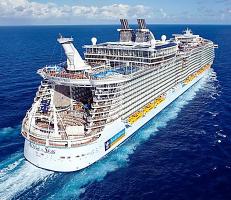 A 15-year-old girl was allegedly plied with liquor aboard a Royal Caribbean ship by a group of men, before being taken to a cabin and gang-raped. She was on a seven-day cruise with her two sisters and grandparents beginning the day after Christmas in 2015. She alleges that everything but the rape took place in full view of crew and security cameras, yet nobody intervened to prevent the men from buying alcohol for her or leading her away to the cabin.
A 15-year-old girl was allegedly plied with liquor aboard a Royal Caribbean ship by a group of men, before being taken to a cabin and gang-raped. She was on a seven-day cruise with her two sisters and grandparents beginning the day after Christmas in 2015. She alleges that everything but the rape took place in full view of crew and security cameras, yet nobody intervened to prevent the men from buying alcohol for her or leading her away to the cabin.
She alleges that on the first night, in full view of Royal Caribbean crew, a group of men bought multiple alcoholic beverages for her at public bars until she became “highly intoxicated,” “obviously drunk, disoriented, and unstable,” and “obviously incapacitated.” That group of around a dozen men then took her to a cabin where they “brutally assaulted and gang-raped her according to the girl’s claim.
Newsweek reports that a district court in Florida had dismissed the girl’s negligence lawsuit against Royal Caribbean over the 2015 incident for failure to state a claim, ruling that she had not sufficiently alleged the operator had breached its duty of care and proximately caused her injuries. But that decision was reversed on Wednesday by the U.S. Court of Appeals for the Eleventh Circuit, which concluded her claims were, in fact, sufficient to allege that Royal Caribbean was negligent towards her.
Is this an isolated case or is sexual assault on cruise ships a chronic problem? Continue reading
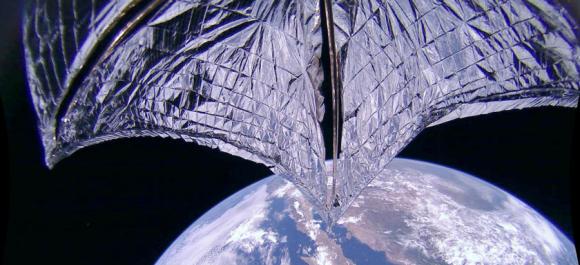 For a number of years, we have followed the Planetary Society‘s efforts to launch a solar sail which would be propelled by light radiating from the sun. Yesterday, the society’s LightSail 2 deployed a 32-square-meter solar sail, about the size of a boxing ring, in Earth orbit.
For a number of years, we have followed the Planetary Society‘s efforts to launch a solar sail which would be propelled by light radiating from the sun. Yesterday, the society’s LightSail 2 deployed a 32-square-meter solar sail, about the size of a boxing ring, in Earth orbit.
LightSail 2 is the first spacecraft in Earth orbit to be propelled only by sunlight. The craft will orbit the earth powered by the momentum of solar photons striking the sail.

STS Lord Nelson
In early July, the Jubilee Sailing Trust (JST) faced a financial crisis where it needed to raise £1m in five days in order to stay in operation. Fortunately, the charity succeeded in raising the funds in time. Their financial challenges have not ended, however.
The charity has announced that it will be decommissioning one of its two ships, the STS Lord Nelson, and will continue its operations on the STSTenacious. Both ships were specially designed and fitted to allow people with physical impairments, including wheelchair users, to sail side-by-side with people who do not have disabilities. It appears that Lord Nelson will be dockside while Tenacious will continue sailing.
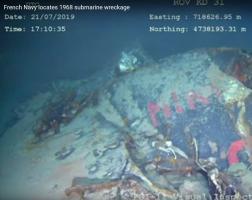 In January 1968, the French submarine Minerve was underway in the Mediterranean on her way back to her home base in Toulon. Communications from the submarine advised that she would be at her berth in about an hour. Then mysteriously, the diesel-electric submarine vanished. Despite an extensive search by the French navy, no trace was found of the submarine and her crew of 6 officers and 46 sailors.
In January 1968, the French submarine Minerve was underway in the Mediterranean on her way back to her home base in Toulon. Communications from the submarine advised that she would be at her berth in about an hour. Then mysteriously, the diesel-electric submarine vanished. Despite an extensive search by the French navy, no trace was found of the submarine and her crew of 6 officers and 46 sailors.
Over 50 years after the Minerve’s disappearance, the French government contracted with the American ocean-mapping company Ocean Infinity to continue the search. Yesterday, Ocean Infinity announced that their Norwegian flag research vessel Seabed Constructor had located the wreckage of the Minerve in about 7,800 feet of water, roughly 28 miles south of the French port city of Toulon.
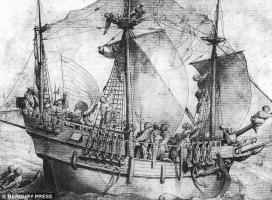 Earlier this year, technicians operating a robotic camera surveying a route for a natural gas pipeline in the Baltic Sea, were surprised to find a 500-year-old shipwreck virtually intact on the seafloor. The ship was found at a depth of 141 meters. The lack of oxygen in the cold and brackish waters of the Baltic Sea help to slow the decay of the ship, which is sitting on the bottom with two masts still rising vertically, the beakhead and bowsprit still projecting from the prow. The remains of a yard rests diagonally on deck while nearby an unlaunched ship’s boat sits snug against the portside gunnel. A bilge pump, capstain, and an anchor, still catted to the bow, are also visible. The shape of the ship’s anchor help date the ship to the late 15th or early 16th century.
Earlier this year, technicians operating a robotic camera surveying a route for a natural gas pipeline in the Baltic Sea, were surprised to find a 500-year-old shipwreck virtually intact on the seafloor. The ship was found at a depth of 141 meters. The lack of oxygen in the cold and brackish waters of the Baltic Sea help to slow the decay of the ship, which is sitting on the bottom with two masts still rising vertically, the beakhead and bowsprit still projecting from the prow. The remains of a yard rests diagonally on deck while nearby an unlaunched ship’s boat sits snug against the portside gunnel. A bilge pump, capstain, and an anchor, still catted to the bow, are also visible. The shape of the ship’s anchor help date the ship to the late 15th or early 16th century.
The ship, though fitted for swivel guns, is believed to be a merchantman. She is believed to have sunk near the time that Columbus made his transatlantic voyages. The Baltic ship at 50-60 feet long is roughly the same size as the ships of Columbus’ flotilla.
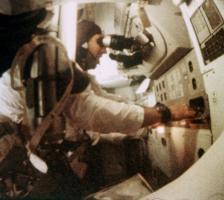
Commander Lovell using the sextant, Apollo 8
Sailors have navigated by the stars since the dawn of time. Now, fifty years after Neil Armstrong first set foot on the Moon in the Apollo 11 mission, we shouldn’t forget that even the Apollo astronauts relied on sextants to navigate to the Moon and back. Not only did a sextant help to get to the moon, but Astronaut Jim Lovell’s use of a sextant would be instrumental in saving the crippled Apollo 13 in 1970.
The Apollo sextant was a modern update of device that sailors have used for centuries. It played a key role in the three-part navigation system in the Apollo program. Much of the navigation was performed using ground-based radar. When that was not available, an inertial guidance system was used. The inertial guidance system tended to drift however and needed to be corrected periodically. To do so, the astronauts used a scanning telescope and a sextant to take star sights. These sights were used to correct the inertial guidance system and to confirm the accuracy of the ground-based navigation system. The sextant was also considered to be a backup against the possibility that the Russians would attempt to jam radio transmissions between Mission Control and the Apollo spacecraft.
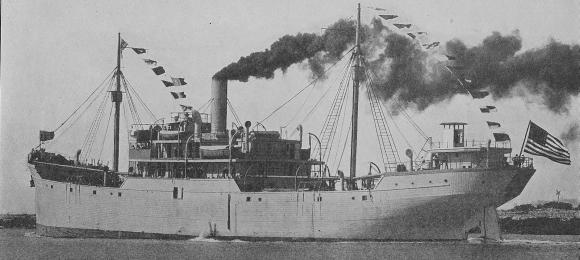
Ferris steamship
A world war was raging and German U-boats were sinking merchant ships faster than they could be built, so the United States government decided to build an emergency fleet of standardized ships. The goal was to build the ships quickly and cheaply to counter the submarine threat.
If the year was 1941, this might be the story of the Liberty ships. Instead, the year was 1917 during the First World War and the US Emergency Fleet Corporation (EFC) set out to contract for the construction of 703 wooden cargo steamships to supplement its slowly growing fleet of steel cargo ships. Several similar designs were ultimately built but the standard design was Theodore Ferris’ type 1001 design. They were 3 islander ships, 82.2 meters long (270′) 13.7 meters wide (45′). They had triple-expansion steam engines and were capable of cruising at 10 knots.
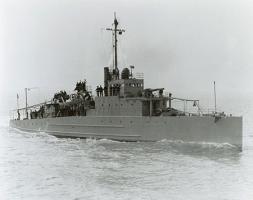 On April 23rd, 1945, the patrol boat USS Eagle 56 was towing targets for US Navy bomber exercises off the coast of Maine. At about noon, there was an explosion around amidships which broke the patrol boat in half. Of the crew of 62, only 13 survived. The sinking was originally blamed on a boiler explosion. It would take the Navy until 2001 to conclude that Eagle 56 had been sunk by the German submarine U-853. USS Eagle 56 was the last US warship sunk by a German submarine in World War II.
On April 23rd, 1945, the patrol boat USS Eagle 56 was towing targets for US Navy bomber exercises off the coast of Maine. At about noon, there was an explosion around amidships which broke the patrol boat in half. Of the crew of 62, only 13 survived. The sinking was originally blamed on a boiler explosion. It would take the Navy until 2001 to conclude that Eagle 56 had been sunk by the German submarine U-853. USS Eagle 56 was the last US warship sunk by a German submarine in World War II.
Exactly where the patrol boat sank remained a mystery, until this week when Garry Kozak, a specialist in undersea searches, announced that his team had found the Eagle 56 in 300 feet of water off Cape Elizabeth on the Maine coast.
